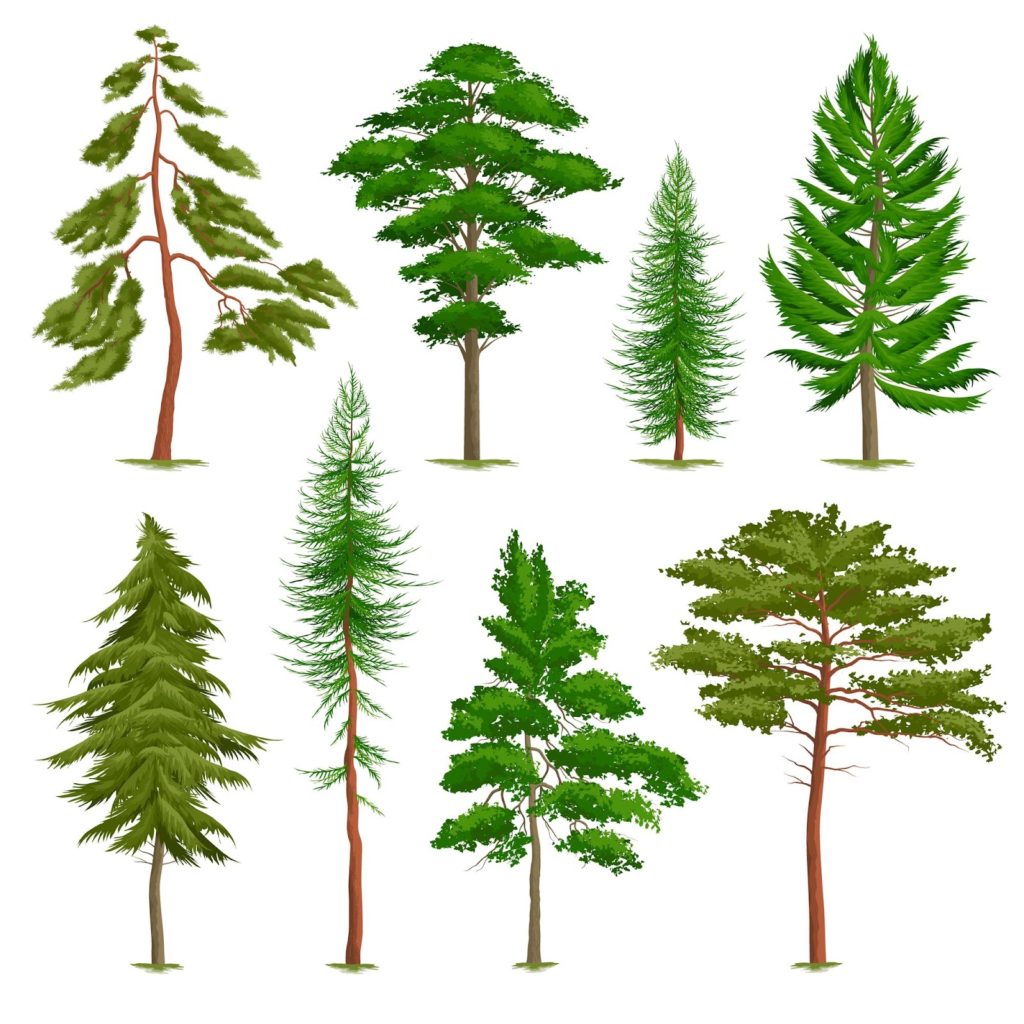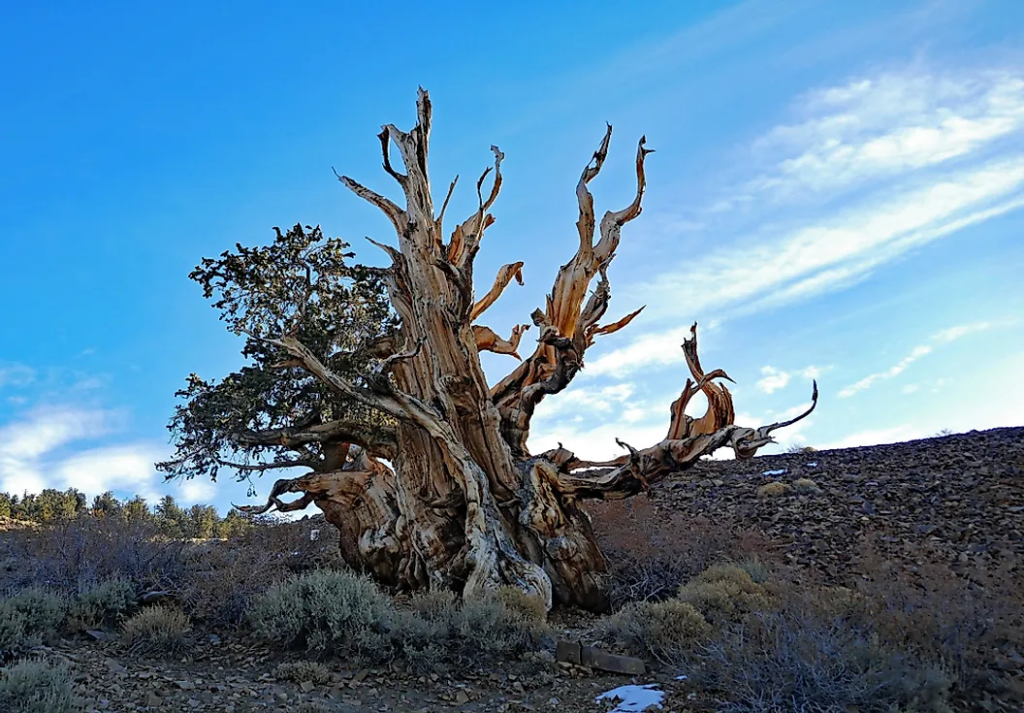8 Interesting Facts About Pine Tree
With roughly 100 varieties, Pine trees are the most prevalent coniferous tree on the planet. These trees grow in the woods with open spaces and sunshine flowing over the forest floor. The trees struggle to thrive in the shade. However, these are the details that most people know. But many facts about Pine trees remain unexplored. For instance, except for the Sumatran pine, which may be found south of the equator, most of these trees are in the Northern Hemisphere.

Exploring the facts about Pine tree
Basic information
- Name: Pine Tree
- Classification (Details):
- Kingdom: Plantae
- Phylum: Pinophyta
- Class: Pinopsida
- Order: Pinales
- Family: Pinaceae
- Genus: Pinus
- Species: Over 115 species
- Latin: Pinus

Description
Pine trees have no leaves because they are evergreen trees. The leaves of these plants stay green throughout the year. They’re great for landscaping because of their vibrant colour and come in a wide range of sizes, depending on their species.
Some species are only 10 feet long, while others can reach a height of over 245 feet. A typical Pine tree is approximately 147 feet in length. The crowns of Pine trees can be up to 30 feet wide. The tallest Pine tree is 268.35 feet tall and found in Oregon’s Rogue River-Siskiyou National Forest.
Pine trees have a longer life span and can live for 100–1000 years, with some living for much longer. At roughly 4,600 years old, the “Methuselah” species, found in the White Mountains of California, is one of the world’s oldest existing life forms. An older tree, which has since been cut down, was 4,900 years old. It’s dubbed “Prometheus” and was discovered in a forest beneath Wheeler Peak.
Pine trees have a thick, scaly bark that leaks resin in most cases. Resin is a sticky substance that aids in the healing of the pine. It’s also quite combustible.

Habitat and distribution
While Pine trees may thrive in both the Northern and Southern Hemispheres, they are solely native to the Northern Hemisphere, with one exception. While some Pine trees have been widely planted on timber estates in the Southern Hemisphere for the wood and resin they offer, they would naturally thrive far further north.
The Sumatran or Merkus pine, endemic to the Philippines, Malaysia, Laos, Cambodia, Vietnam, and Indonesia, is the lone exception to the Northern Hemisphere-only pines. Their hardiness makes them well suited for farming in climate zones where other trees won’t thrive.
Pine trees can endure poor soils; hence they grow at higher altitudes where the topsoil layer is low or in sandy coastal locations where soil fertility is poor. They can survive at an elevation of up to 13,000 feet and are found in various mountain ranges and peaks. Acidic, well-drained soils are best for the trees.
Pine trees have a natural distribution in the Northern Hemisphere. They may be found in a wide range of nations in the northern temperate zone, extending from the Tropic of Cancer to the Arctic Circle. Pine trees can be found on the southern coast of France (maritime pine), in North Africa (Morocco and Algeria) depending on the variation (stone pine), along the Mediterranean, or near the Arctic Circle in Scandinavia (Scots pine).
Cultivation
Pine trees are among the few tree species that don’t have flowers or fruit. Pinecones carry seeds that are released after the seeds reach maturity. Pine trees reproduce through the male or female reproductive organs in cones. A single Pine tree has both male and female reproductive organs. Male cones release pollen, while female cones use the pollen and create seeds. The seeds are winged and distributed by the wind, as well as by animals that eat them.

Uses and benefits:
- The Pine tree is a habitat for squirrels, raccoons, birds, and other forest animals.
- The resin, High-Terpene resin, is abundant in Pine trees. Turpentine is made by distilling High-Terpene resin. Turpentine is used as a solvent in the production of varnish. Turpentine oil is now mostly utilised as a processed synthetic pine oil in the production of perfumes and as a scent component in cleaning products. The resin from pine is also used to treat insect bites, burns, and blisters.

- Since the tree is durable enough to withstand the weight of the decorations and lights together, they are used as Christmas trees.

- The tree is used as an ornament in parks and gardens.
- Allergenic potential (Read more)
- The Chinese white pine nut is somewhat poisonous. It gives you a metallic taste on your tongue. After a few days, the uncomfortable sensation goes away. Pine Mouth Syndrome is a medical ailment linked to the ingestion of Chinese white pine.
- Pine pollen can cause allergic reactions to people allergic to pollen, like itchy and teary eyes, baggy eyes, runny or blocked nose, coughing, and sometimes triggers asthma.
- Pine nut allergies vary from mild to severe anaphylactic reactions. Difficult breathing, tightness in the chest, hives, rashes, swollen tongue, lips, throat, nose, vomiting, stomach ache, diarrhoea, dizziness, fainting, and heart failure are recorded symptoms that must be recorded and treated at the earliest. Allergy to pine nuts can also cause itchy throat, abdominal uneasiness, and sneezing.
Interesting facts about Pine tree
- Forest fire: Surprisingly, many pine species thrive in a forest fire. A Pine tree has thick bark, and during a forest fire, the tree sheds the outer bark and continues to survive. Also, the tree absorbs nutrients from the burnt ground, which contains various organic nutrients. During a fire, the cones of some species open up and disperse their seeds.

- Healthy: The pine nuts are full of Vitamin B, K, and L. They also have a rate of magnesium, manganese, and protein. Pine needles contain Vitamin C and are useful in cold, flu, and scurvy.
- Smell: The tree releases a pleasant smell when it is disturbed. The smell of the tree is used as a fragrance in aromatherapy, and also air fresheners of the same are available. Another reason why the tree is used during Christmas.
- Christianity: Pine cones have an important significance in Christianity as well. A pine cone is on the top of the Pope’s holy papal staff. A massive bronze sculpture of a pine cone may also be seen at the “Court of the Pine Cone” right outside St. Peter’s in Vatican City.
- Consumption: The Southern United States has a special pine nut coffee. Jam made from pinecone is widely eaten in Ukraine, Georgia, and Russia. Pine cones have also been declared the state flower of Maine.
- Evolution: Pine tree evolution in the Northern Hemisphere was documented around 130–200 million years ago during the Early Jurassic Period of the Mesozoic Era. Conifer traces may be traced back 300 million years, while the genus Pinus is roughly 95 million years old.
- Bark and Leaves: The Pine tree bark is scaly and is organised in whorls around the tree. The needle-shaped modified leaves of the pine tree grow in clusters of two or five on the branches. White pine has five needles per cluster, while red pine has two needles per cluster. Other species usually have two or three needles.
- Diseases: The trees are vulnerable to fungal diseases, attacks by birds and insects, nematode infections, and infestations.
Conclusion
So many features in one single tree make you wish you could grow it in your home garden. It might be possible if you live at a high altitude. They need care and an appropriate place to spread their branches and needles. The next time you see a big Pine tree, observe its features and see how tall they are and what their age is. For more cool facts about Pine tree, visit our website.
FREQUENTLY ASKED QUESTIONS
1. Are all pine trees evergreen, or are there any exceptions?
Most pine trees are evergreen, meaning they retain their green needles throughout the year. However, there are a few exceptions to this rule. The larch tree, for example, is a deciduous conifer that sheds its needles in the autumn.
2. What are the economic uses of pine trees and their byproducts?
Pine trees and their byproducts have a wide range of economic uses. The timber from pine trees is commonly used in construction for building houses, furniture, and other wood products. Pine resin is harvested for various purposes, including making adhesives, varnishes, and turpentine. Additionally, pine needles can be used for mulch, and pine cones are often used for crafts and decorations.
3. Are there any cultural or symbolic associations with pine trees in different regions or cultures?
Yes, pine trees hold cultural and symbolic associations in various regions and cultures. In many ancient cultures, pine trees were seen as symbols of longevity, wisdom, and resilience. For example, in East Asian cultures, the pine tree is highly revered and is often associated with strength and endurance. In Western cultures, pine trees are often associated with the holiday season and used as decorative Christmas elements. In some Native American cultures, pine trees hold spiritual significance and are considered sacred.
